I
The American radical campaigner, Henry Clarke Wright spent much of 1844-45 touring Scotland, making incendiary speeches condemning the Free Church for accepting donations from pro-slavery supporters in the United States. In one of his regular updates to William Lloyd Garrison, the editor of the Liberator, the abolitionist paper in Boston, he wrote from Arbroath on 11 February 1846:
When I was in this town in October of 1845, Rev. Mr. Sorley, in whose church I lectured, was away, getting a wife. Whom do you think he married? A COLORED WOMAN, the daughter of a slave, quite dark, but highly educated and accomplished, and of exalted character. She is the cherished object of respect and affection among all the people of this town. No woman in town is more beloved and respected. What will the negro-hating priests and politicians of America say to this? Here is a white husband and a black wife, and that husband a minister – greatly honoured by his people, and his black wife adds to his respectability.[1]
The occasion of Wright’s return to Arbroath was to arrange speaking engagements for himself and Frederick Douglass, then busy delighting audiences in Dundee. Wright had hoped to book Sorley’s church again, but from the reports in the Arbroath Guide and Northern Warder, it appears that he failed to find a church willing to accommodate them, and they had to settle instead for the smaller Trades’ Hall on the High Street for their first meeting on 10 February. They were then offered the Abbey Church (which stood across from Sorley’s and is still there today) and the following two evenings they spoke there.
Sorley’s wife, whom Wright does not name, was Eliza Greenfield. She was born in Kingston, Jamaica and according to the baptismal records [free registration required] she was the daughter of a ‘free mulatto’, Elizabeth Strachan. Her father was James Greenfield, not otherwise identified there, but he does have an entry in the Legacies of British Slavery database, indicating that he was a partner in a firm that made him ‘joint-owner of … enslaved people contracted to the military and government in Jamaica.’ He had an interest in several estates, and was ‘shown as an absentee in 1826.’ Greenfield’s descendants believe that the unnamed admiral’s agent in Tom Cringle’s Log – Michael Scott’s fictionalisation of his experiences in the Caribbean, first serialised in Blackwood’s Magazine in 1829 – was their ancestor. He is described as a ‘remarkably neat personage’ who enjoyed entertaining at his mansion, assisted by a ‘very well-dressed brown woman’ speaking patois who can only be his long-standing mistress and mother of several of his children.
That ‘Legacies’ entry does not mention Eliza (born 1812), but it does record that Greenfield had several other children by Elizabeth Strachan (whose surname suggests that her father was a Scottish colonist too). There was Agnes (born 1814), James (born 1818), Mary (born 1820) and Barbara (born 1825). There were two other daughters: Margaret, ‘a free mulatto child’ whose mother is not identified (born in 1817) and Jane Anna, whose mother was Thomasina Freeman, a ‘free quadroon’ (born around 1809), Greenfield returned to his home town Edinburgh some time in the 1820s, with several of his Jamaican children.
He lived at 9 East Claremont Street, a house he shared, according to the 1841 census, with his daughter Agnes, his niece Margaret Home Montgomery and her son Hume, whose father may have been Greenfield (he refers to him as his son in his will and Hume’s register of marriage identifies them both as parents). Agnes’ sister Margaret, had already left home and married Hector Gavin, a physician, in Edinburgh on 12 Dec 1837 [Register of Marriages, St Cuthbert’s]. In 1841 they were living in Bethnal Green with another sister, Mary [1841 Census] who two years later would marry William Sage, a chemist [Register of Marriages, Stepney]. Meanwhile Agnes had also moved to London, marrying William Goodchap, an accountant, in 1842.[2]. Eliza had also moved on, joining her cousin Elizabeth who had relocated to Arbroath after marrying a schoolteacher there in 1837, possibly to help look after their second child, James Hume, born in 1840. Eliza is listed in the 1841 census as residing with them at Millhead, a woman of independent means, marked with an ‘F’ for ‘foreign-born’.
Here already we have the beginnings of the story of one family of what Daniel Livesay called, ‘Children of Uncertain Fortune’, the title he gave to his study of the migration of ‘mixed-race’ Jamaicans to and from Britain in the ‘long eighteenth century’.[3] Like many of these children, three of the sisters ended up in London – their brother James too it seems – but Eliza remained in Scotland.[4]
II
How many black people were living in Scotland at this time? It is very hard to say. Most attempts at a headcount focus on the decades around 1800 and draw on data for London and extrapolate out for ‘the whole country’ (which may or may not include Scotland). The two most reliable studies estimate around 10,000, which suggests that, even on the most generous apportionment, the number north of the border is unlikely to be more than two thousand.[5]
Certainly, we know the names of only a very small number of them. Livesay does not mention the Greenfields, but he does discuss the Jamaican offspring of John Tailyour (surnamed Taylor), whose passage he arranged to Montrose, where he purchased a grand house at Kirktonhill in 1792. The boys were sent to boarding school in Yorkshire, but Catherine seems to have stayed in the area and lived with her aunt.[6] The Tailyour family probably helped to arrange the education of Edward Stirling, the son of a planter in Jamaica and a ‘creole woman of colour’: he and his cousin were pupils at a small parish school in St Vigeans in Angus. Stirling subsequently worked at the firm of J and A Dennistoun in Glasgow and later emigrated to Australia in 1839 where he set up a business that became involved in copper mining.[7]
Livesay also mentions a John McIntyre, who was a pupil at Dollar Academy in the 1820s and went on to practice medicine in Doune.[8] From Jamaica too were Peg Williamson, who worked as a midwife for most of her life in Banffshire, and Nancy Graham, who settled in Cromarty, and acquired substantial wealth including a plantation in Surinam.[9]
The three children of William Macpherson, an overseer in Berbice, returned with him to Scotland in the 1810s, Eliza and Matilda attending school in Blairgowrie, while William was enrolled in a boarding school near Perth.[10] Also from Berbice was John Fraser, apprenticed to a surgeon in Cromarty in 1832.[11] David Alston has identified several individuals born in the Caribbean in the rolls of educational institutions: Marischal College, Aberdeen (George, John and William Munro), Inverness Academy (John Noble, Helen Inglis), Elgin Academy (James Botar), Tain Academy (Marion Iver, Eve and George Oudkerk), and Fortrose Academy (Eliza and William Junor) while Thomas Cuming graduated as a doctor from Edinburgh University in 1824.[12] Another doctor trained at Edinburgh University was Harry, a son of Dolly Thomas, a former slave turned wealthy slaveholder herself in Demerara; several of her grandchildren were educated in Scotland too.[13] William Fergusson and Jean-Baptiste Philip(pe) also graduated there in the 1810s before going on to careers elsewhere.[14]
William Davidson may have picked up some schooling in Edinburgh and Aberdeen in a checkered trajectory that ended with his execution in London in 1820 for his part in the Cato Street Conspiracy.[15] Ian Duffield has identified several black Scots from Edinburgh and Leith who were transported to New South Wales in the 1820s and 30s, including Nameroa (aka Nimrod, ‘Black. Robbin’, Robertson) in the service of a Major-General Dalrymple, Christian Sanderson, a laundry maid, and William Green, a private in the 70th Regiment of foot.[16]
Several are better known. Malvina Wells, born enslaved in Carriacou in 1804, lived and worked as a maid in Edinburgh for much of her life. John Edmonstone, from Guyana, taught taxidermy at Edinburgh University in the 1820s, where one of his students was the young Charles Darwin.[17] And Peter Burnet, an African American who made his home in Paisley was a well kent figure about town town and the subject of a short biography.[18]
It is striking how so few thumbnail sketches can suggest quite a wide range of opportunities were open to such children. Some certainly faced financial hardship and struggled to find employment that might have lifted them out of poverty, but family connections meant that some benefited from a good education, and even inherited substantial wealth; a few owned plantations and their enslaved workers. The sample, however, is unlikely to be representative, given the factors that govern the creation of an archival footprint. Only a small number seem to have been politically active.
III
Eliza Greenfield is worthy of a place among this select company. What do we know of her life in Arbroath? The records tell us that she married the Rev. Alexander Sorley on 21 October 1845. He was then the minister of the United Secession Church on Fore (now West) Abbey Street, now no longer standing. The ceremony itself took place in Edinburgh, her residence, according to the register, the same as her father who is described as ‘late merchant of Jamaica.’ As for the later references in the archives, she has but a shadowy presence. Sorley was a popular preacher, known especially for his sermon to the sailors, delivered every Spring before the sailing of the Baltic fleet.[19] One of his pet projects was launched in October 1847 when he proposed ‘the formation of an Association for the promotion and improvement of sacred music in Arbroath.’[20]
Following the merger of the United Secession and Relief Churches to create the United Presbyterian Church in 1847, Sorley took his congregation to a new building in 1851, known as the Erskine Church in Horner’s Wynd (now Commerce Street) with some 800 sittings.[21] In 1863 his stipend was increased by £30 to £200 a year, with an additional allowance of £30 for a manse.[22]
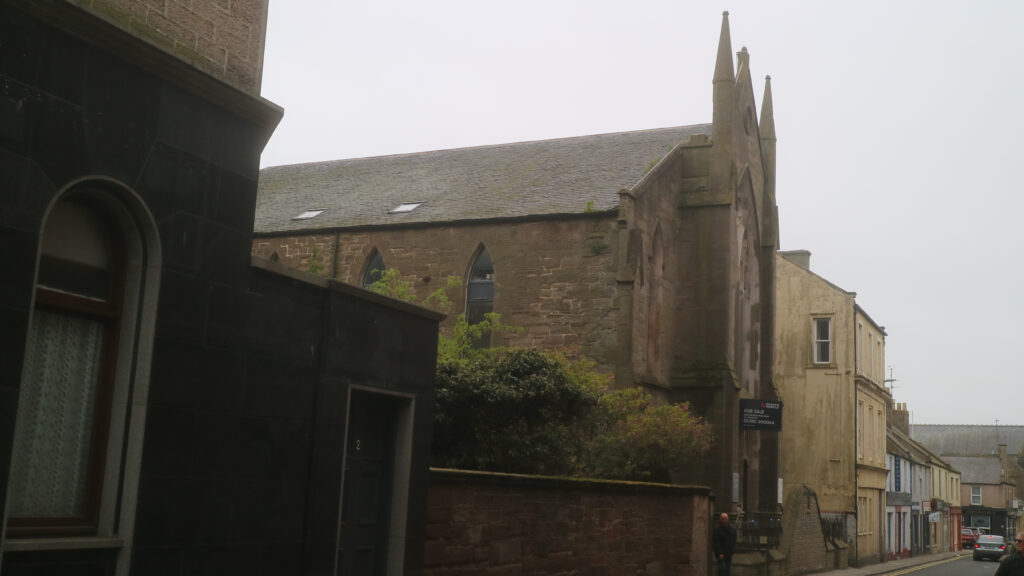
We know Eliza was a talented pianist – she may have been taught, as her sister Margaret was, by John Robertson at his music school in Edinburgh.[23] She accompanied pupils at exhibitions of sacred music at Arbroath Academy, and performed solos and duets at social events at her husband’s church, which she was was responsible for organising.[24] Eliza served on various fund-raising committees and kept stalls at bazaars, supporting causes such as the Charity School, Arbroath Ladies’ Clothing Society, the First Forfarshire Artillery Volunteers and casualties in the Franco-Prussian War (articles to be divided equally between the two sides).[25]
A newspaper report of a ‘fancy bazaar in connection with the Carnoustie United Presbyterian Church’, held at the Kinnaird Hall, Dundee in October 1873, gives a good idea of such occasions:
A peep at the Kinnaird Hall last night would have been sufficient to convince the most sceptical, that the ladies of Mr Millar’s congregation and their numerous fair friends mean to do business, and are prepared to do it very extensively too. On the east and west sides of the hall six stalls have been fitted up, in a beautiful style becoming the occasion, and these are now laden with fancy wares of the most glorious colours and most exquisite workmanship, while more sober, if also more directly useful articles, have their place, although as becomes their character they do not obtrude themselves too forcibly on one’s attention. Perhaps, before long, they may have some assistance from those in charge of them in doing this. The stalls all vie with each other in point of fullness. Apparently every inch of space where an article will lie or hang is occupied, and it is a mystery only known to the initiated how the ladies can move about being among such a quantity of goods as was displayed round about them last night when we were admitted to a private inspection of the bazaar. The hall itself has been lavishly decorated with flags and banners, and a fine collection of greenhouse plants from Panmure and Carnoustie are arranged in the hall in front of the platform. Beautiful bouquets of flowers placed here and there among the plants produce a fine effect; and altogether the hall has a most charming appearance, which is considerably enhanced by the presence in strong force of the fair superintendents of the stalls, all full of animation and confident expectation of ‘roaring’ trade.
The author goes on to describe each of the six stalls in detail, including
STALL No. 2. – This stall is presided over by Mrs Sorley and Mrs Robert Lumgair (Arbroath), Mrs Thomson (Arbirlot), Mrs Marwick, and Mrs Anderson, assisted by Miss Weir, the Misses Ritchie, and Miss Nelly Ireland. Here again the bright-coloured sofa blankets compel some notice, as do also the quantity of coseys. Prominent on this stall is a small ottoman of the most magnificent workmanship, an exceedingly handsome fender stool, and skeleton flowers in a glass shade. There is also a Singer sewing machine here, which will be raffled for.[26]
Eliza never knew the back-breaking toil of the plantation, but she would have been aware of her inferior status from a young age, in what was the leading slavery port in the British Atlantic, a highly stratified society where newly landed African captives were turned into chattel. And she and her siblings could not have escaped the patronising or censorious gaze of respectable Edinburgh, hardly satisfied with their father’s claim that they were his ‘Spanish nieces’. Yet she came to be accepted into a community on the North Sea coast that took for granted its prosperity far from the frontiers of Empire whence much of it came. Did she ponder any of this when she and her husband were special guests at a Banquet and Freedom of the Burgh of Arbroath to Major Rait of the Ashantee Expedition the following year.[27]
Eliza’s father died in 1857. Greenfield [Edinburgh Sheriff Court Wills] left everything to his son Hume, excepting an annuity of £150 to his niece Margaret. Had Hume predeceased his father, the estate would have been divided equally between Margaret and four of the five Jamaican children then living in Britain: Eliza, Agnes, Mary and James. (Why their sister Margaret Gavin was excluded is not known).
In the 1861 Census the Sorleys are recorded as living in a large detached house, Belmont, on Millgate Loan. The Valuation Rolls for 1865 are interesting for its indication of the occupations of their neighbours: manufacturer, surgeon, solicitor, flesher, grocer, then – on the less prosperous Millgate – china merchant, draper, printer, flesher, jeweller, mill foreman, weaver, millworker, mechanic, labourer – mainly terraced houses on way into town centre.
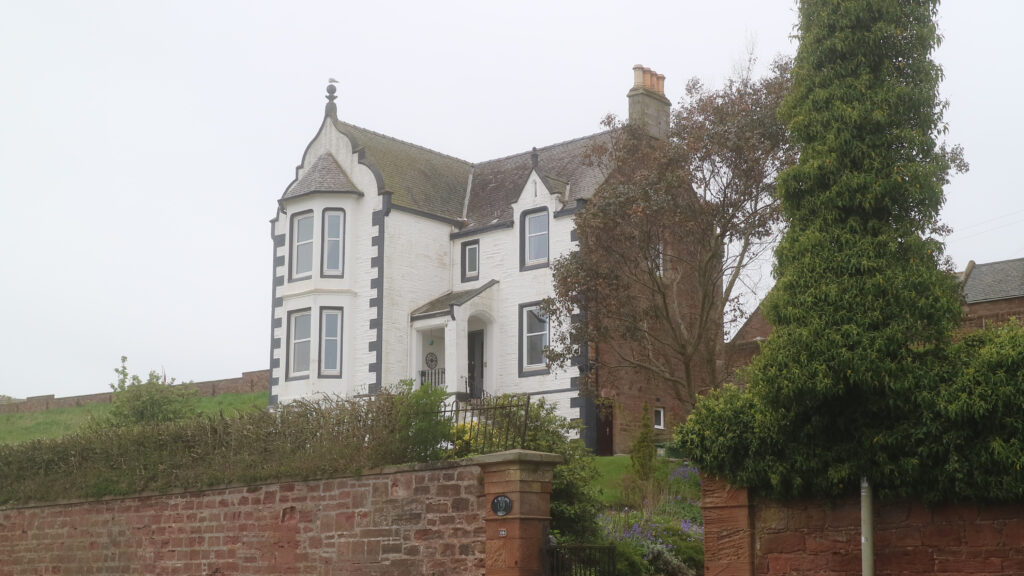
In 1875, Alexander Sorley resigned as minister of the Erskine Church due to failing health, and less than two years later, died aged 68. On the day of his funeral, a large body of mourners walked from the Abbey burying-ground to the home of the deceased, all the shops along the route closed as a mark of respect.[28]
Eliza would live another eight years. In the 1881 Census Eliza is listed as widow, head of household, aged 64, born Jamaica, living with two servants, Jemima Grant and Anne Esplin. The Register of Eliza’s death (7 March, 1885) has her address as ‘Belmont, Millgate Loan, Arbroath’ and she is described as the ‘Widow of Alexander Sorley, Minister of Erskine U.P. Church. (Illegitimate),’ her father as ‘James Greenfield, Merchant, Kingston Jamaica (deceased),’ and her mother as ‘not known.’ Her personal estate was valued (after debts) at £5673 16s 11d. She is buried with her husband and his first wife in the grounds of Arbroath Abbey.
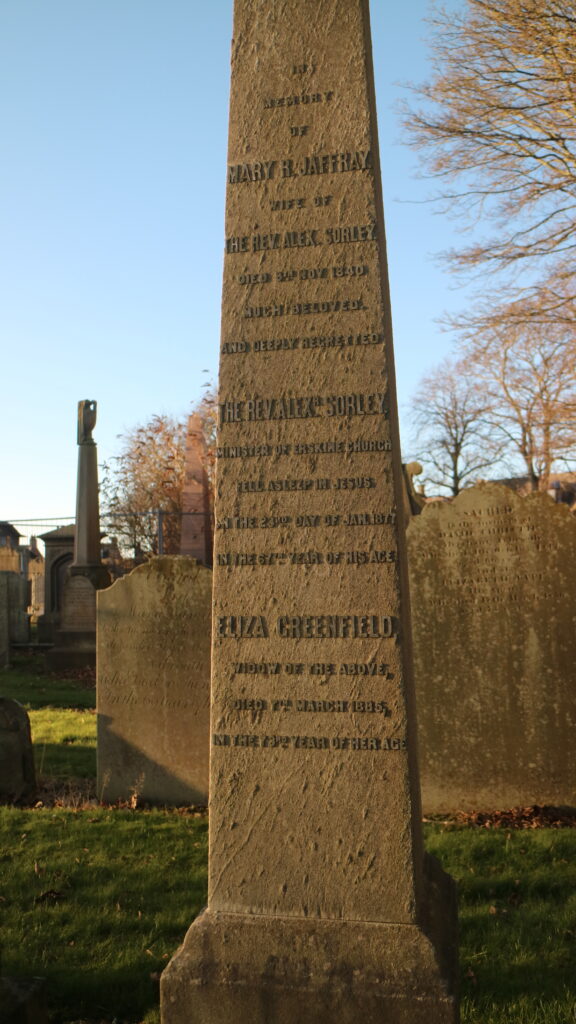
In her will [Forfar Sheriff Court], made a year before, we might glimpse something of her life in Arbroath and who meant most to her. Here is the important passage, with the beneficiaries highlighted.
I Eliza Greenfield Sorley, relict of the late Revd Alexander Sorley of Erskine UP Church Arbroath do hereby make my Will on this Twenty first day of February 1884 bequeathing to my step daughter Mrs Jane Ann Sorley Bartlett whom failing her to her children my House Belmont, Arbroath with Furniture Silver Linens and all contained in the house excepting all the China and Ornaments in the Drawing room to my dear friend Mrs Marion Logan or McClure residing in Greenock. My step daughter to be my sole Executrix. All the money I possess in whatever way laid out to my said step daughter and failing her to her children. My step daughter shall pay out of my Estate to the following: To my sister Mrs Agnes Greenfield or Goodchap Roseneath Lodge, Lee, Kent One thousand. To my cousin James Hume Webster Four hundred pounds. To my friend Mrs Agnes Lyon or Charles Corsar, Seaforth, Mrs William Corsar’s Brooch with one of my gold Bracelets. To Mr Charles Corsar Twenty five pounds. To Mr William McClure, Senr Writer in Greenock Fifty pounds. To Jemima Grant my faithful Servant the sum of One hundred pounds all my clothes xlaid my Gold Watch and gold chain if she is in my service at my death. To Mrs Agnes Webster or Harvey my Gold Bracelet with my father’s miniature in it. I leave no debts. Medical Funeral and servants mourning to be paid as soon as possible.
Let us consider them one by one and speculate how Eliza might have known them. There is much guesswork here, but it might inspire further research. There is already the framework for a historical novel, perhaps.
- Mrs Jane Ann Sorley Bartlett. Eliza’s stepdaughter, from her husband’s previous marriage to Mary Jaffrey, who died in November 1840, only three weeks after her daughter was born [gravestone; no statutory record of death]. The 1851 Census shows her living with her father and stepmother and it is evident that she was a pupil at Arbroath Academy.[29] By the time she was 20 she was living with Ebenezer and Jessie Thomson in the village of Friockheim, a few miles north west of the town [1861 Census]. As the will indicates, she subsequently married, in 1872, Joseph Bartlett,[30] a doctor of medicine in London, deceased at the time of the will, having died in 1882 [Register of Deaths, Kensington]. She gets the house, but remained in Notting Hill, selling it soon afterwards for £900 to Mr James Cargill on behalf of a client.[31]
- Mrs Marion [Stewart] Logan or McClure. A ‘dear friend’. Marion Logan was born in Stirling on 25 November 1822 to Rev James Logan and Catherine Stewart [Parish Register of Births, St Ninians], her father having been minister of St Ninians’s Relief Church since 1803.[32] She moved to Pitt Street in Leith with her parents around 1839 [PO Directories] and so was living a short walk away from Eliza for a year or two and they may well have met each other then. They were ten years apart in age (28 and 18 in 1840) but perhaps Eliza was her tutor? If they did meet then, it is possible that Marion’s father (at whose church Mary Jaffrey and Alexander Sorley were married – in 1837) (Parish Register of Marriage, St Ninian’s] could have introduced Eliza to her future husband. In any case, Marion is likely to have attended Eliza’s wedding in Edinburgh in 1845. After Marion married in 1851 [Parish Register, St Cuthbert’s, Edinburgh] she went to live with her husband in Greenock (see eg 1871 Census). To be a ‘dear friend’ in the 1880s must mean they kept in touch over many years, but, separated by over a hundred miles, probably didn’t see each other often. Marion gets China and Ornaments in the drawing room. Her husband William McClure – identified as a solicitor here – is a separately named beneficiary, with £50 to him.
- Mrs Agnes Greenfield or Goodchap. ‘My sister’. She is the only sibling mentioned in the will. We do know that of the four siblings who settled in Britain, James died in 1866 [citation missing], Margaret in 1876 [citation missing], and possibly Mary too by the time of the will. Agnes gets the largest cash portion: £1000.
- James Hume Webster. ‘My cousin’. Actually cousin once removed, in other words, the son of her father’s other niece, Elizabeth Steel(e) Montgomery (1810-1889) (Parish Register of Births, Edinburgh; Statutory Register of Deaths, Arbroath) who moved from Edinburgh to Arbroath after marrying an English teacher at Arbroath Academy, Alexander Webster in 1837 [Parish Register of Marriages, St Cuthbert’s]. James Hume was born 1840 [Parish Register of Births, Arbroath]. And Eliza was living with the three of them (actually also another Alexander Webster, grandfather perhaps, so four) at Millhead according to the 1841 Census. Eliza may well have formed a close attachment to him as a baby and they remained close. The family moved to Academy Street where, according to the 1851 Census they had four more children. By 1861 James was working as a solicitor’s clerk in Edinburgh and was still there two decades later (1861 and 1881 Censuses). He died in 1906 aged 65, mother’s maiden name Montgomery) (Statutory Register of Deaths, St Giles). James gets £400, an indication perhaps that Eliza remained in touch with him after he went away to pursue a legal career.
- Agnes [Johnstone] Lyon or Charles Corsar. ‘My friend.’ Agnes was born in Arbroath in 1835 [Arbroath Parish Register of Births]. According to the 1841 Census she was living with her parents and three siblings at Seaforth House, on the south edge of town. She married Charles Webster Corsar (1836-1900) in 1860 [Statutory Register of Marriages]. The 1871 Census indicates that they lived at Seaforth House, just a few minutes’ walk from the Sorleys, with four children (David, William , Marjory, Jane). Corsar & Sons were a successful business in Arbroath. In 1849 Corsar and Sons launched mass production of their top quality Reliance sailcloth. Importing flax from the Baltic. The oldest son William H Corsar died 1886, and ‘the youngest and sole surviving partner, Charles Webster, inherited an estate “valued at some hundreds of thousands, I know not how many” according to his brother in law, a local preacher retained by the Corsars on a stipend of £50 per annum. Three sisters were to receive £10,000 each and two nephews £4000’. Charles Webster went on to build sailing ships, naming one ‘Monkbarns’ after the character in Scott’s Antiquary. ‘By the time Charles Webster died, in 1900, he left a fortune valued by the Arbroath Herald at about a quarter of a million pounds, in flax, yarn, cloth, stores, machinery, mills, factories – and ships. Nine ships in all.’[33] In her early twenties, Agnes, like Eliza, was on the committee of the Arbroath Ladies Clothing Society, and after her marriage was often mentioned with Eliza in newspaper reports of church fundraisers, Charity School annual examinations, helping the war wounded. Her husband was Secretary of the Erskine Church committee. The families were evidently close. Agnes gets ‘Mrs William Corsar’s brooch’ – returning a gift (or legacy) from one of Agnes’ sister- or daughter-in-laws. And Charles himself gets £25, not that he needed it, but a symbolic token of affection.
- Jemima Grant. ‘My faithful servant’. She gets £100, clothes and accessories.
- Mrs Agnes Webster or Harvey. Not identified as such, but the sister of James Hume Webster, another cousin (once removed). Agnes was born 21 Oct 1847 [Parish Register, St Vigeans, Arbroath], and I think she is the same person as ‘Janet A’ (aged 3) who appears in the 1851 Census for Academy Street. She does not appear in the 1861 Census when the family had moved to Commerce Street (though this does indicate that her father Alexander is now a ‘retired teacher of English’), but does in the 1871 Census (barely legible, but has her father Alexander, aged 66, with occupation now as ‘registrar or births’, and a daughter, aged 23). In David Dobson’s Scots in the USA and Canada 1825-1875 we learn that ‘Webster, Janet Agnes, daughter of Alexander Webster, the registrar of Arbroath, married William A. Harvey, engineer, Royal Navy, in Halifax, Nova Scotia, on 19 April 1880.’[34] In the 1891 Census she is listed as head of household, age 43, 19 Dalhousie Place, ‘wife of [head engineer?] with son 10 and daughter 8 and servant. So Agnes is sometimes called ‘Janet A’ and sometimes ‘Janet Agnes’. This is possibly because the first-born child was called Janet (and she is the infant living with her grand-uncle James Greenfield in Edinburgh in 1841); she died young, and her name was transferred to her younger sister.[35] Agnes gets ‘my Gold Bracelet with my father’s miniature in it’. Her father, note, is Agnes’ grand-uncle.
IV
One other person of interest is Alexander Webster. According to the record of his daughter’s marriage in 1880 he was the Registrar of Births, Marriages and Deaths in Arbroath.[36] But at the time of his own marriage in 1837 he was an English teacher at Arbroath Academy (Parish Register of Marriages, St Cuthbert’s). Ten years later he was recorded as a member of the committee of the association established by Sorley for the promotion and improvement of sacred music in Arbroath.[37] According to McBain’s Arbroath: Past and Present, Webster ‘threw in [his] lot with the Free Church’ when it broke away from the Church of Scotland in the Disruption of 1843 and only a storm of protest prevented the Directors from sacking him.[38] So before she was married, Eliza was living in the home of a prominent supporter of the Free Church. What would have been her reaction to her fiancé apparently welcoming Henry Clarke Wright deliver a ‘Send Back the Money’ lecture at his church a few weeks before their marriage in October 1845? Perhaps her disapproval was the reason he back-tracked and did not allow Douglass to speak there the following February. But perhaps Webster was one of those in the Free Church who disapproved of its willingness to extend fellowship to its counterparts in the United States. After all, one of the two ‘overtures’ presented to the General Assembly in 1846 calling on the Church leaders to reconsider their position on slavery, came from the Angus and Mearns Synod to which the Arbroath Presbytery belonged. Did the presence in his household of a daughter or granddaughter of an enslaved mother trigger a family crisis in this small coastal town that reverberated – however faintly – in an abolitionist newspaper in Massachusetts?
[Work in progress. Last updated 3 February 2025]
[1] Henry Clarke Wright to William Lloyd Garrison, Arbroath, 11 February 1846, Liberator 3 April, 1846.
[2] Caledonian Mercury, 22 September 1842. See also Register of Marriages, Shoreditch.
[3] Daniel Livesay, Children of Uncertain Fortune: Mixed-Race Jamaicans in Britain and the Atlantic Family, 1733–1833 (Chapel Hill: University of North Carolina Press, 2018).
[4] Information about James is hard to come by. But we do know that in 1849 he appeared in court after he assaulted his brother in law, William Sage (his sister Mary’s husband): Morning Herald, 15 October 1849.
[5] Norma Myers, Reconstructing the Black Past: Blacks in Britain, 1780–1830 (London: Frank Cass, 1996), p.29; Kathleen Chater, Untold Histories: Black People in England and Wales During the Period of the British Slave Trade, c.1660–1807 (Manchester: Manchester University Press, 2009), p.30. Their figure matches that of Folarin Shyllon, though, as Chater points out, he did not indicate how he arrived at the figure: F. O. Shyllon, Black People in Britain, 1555–1833 (London: Oxford University Press, 1977), p.102.
[6] Livesay, Children of Uncertain Fortune, pp. 186–88, 227–31, 281–91, 323.
[7] William Ferguson Clark, ‘John Bowman, Schoolmaster of St Vigeans and his Pupil, Edward Stirling: The Story and the Sources’ (2022).
[8] Livesay, Children of Uncertain Fortune, p. 357; June Evans, ‘African / Caribbeans in Scotland: A Socio-Geographical Study’, PhD Dissertation, University of Edinburgh, 1995, p. 77. Bruce Baillie, History of Dollar (Dollar: Dollar Museum Trust, 1998) calls him Daniel McIntyre (p 75).
[9] David Alston, Slaves and Highlanders: Silenced Histories of Scotland and the Caribbean (Edinburgh: Edinburgh University Press, 2021), pp. 4–5, 287–89.
[10] Stephen Foster, A Private Empire (Millers Point, NSW: Piers 9, 2011), pp. 163–93. Their father’s mother did not consider them worthy of the family name, and so were called Williams, after their father’s forename (pp. 175, 177). See also Livesay, Children of Uncertain Fortune, pp. 355–61.
[11] Alston, Slaves and Highlanders, p, 4.
[12] Alston, Slaves and Highlanders, pp. 280–90.
[13] Kit Candlin, The Last Caribbean Frontier, 1795-1815 (Basingstoke: Palgrave Macmillan, 2012), 45-48.
[14] Lisa Williams, ‘African and Caribbean Residents of Edinburgh in the Eighteenth and Nineteenth Centuries’, Kalfou, Vol 7 No 1 (2020), 46; Lorna McDaniel, ‘The Philips: A “Free Mulatto” Family of Grenada’, Journal of Caribbean History, Vol 24 No 2 (1990).
[15] Alston, Slaves and Highlanders, pp. 293–96.
[16] Ian Duffield, ‘Identity, Community and the Lived Experience of Black Scots from the Late Eighteenth to the Mid-Nineteenth Centuries’, Immigrants and Minorities, Vol 11 No 2 (1992), 105-129.
[17] Mark Duffill and Eric J Graham, ‘John Edmonstone – the Black “Bird-Stuffer” of Edinburgh’, History Scotland (January/February 2007), pp. 20–22.
[18] [John Parkhill], Sketch of the Life of Peter Burnet, a Negro, Eighth edition (Paisley: J Neilson, 1842).
[19] J. M. M’Bain, Arbroath: Past and Present (Arbroath: Brodie and Salmond, 1887), 147.
[20] Dundee, Perth and Cupar Advertiser, 19 October 1847.
[21] Robert Small, History of the Congregations of the United Presbyterian Church, from 1733 to 1900 (Edinburgh: David M. Small, 1904), 103; see also George Hay, History of Arbroath to the Present Time, (Arbroath, Thomas Buncle, 1876). 249. and Rev William MacKelvie, Annals and Statistics of the United Presbyterian Church (Edinburgh: Oliphant & Company, and Andrew Elliott, 1873), 85-6.
[22] Montrose, Arbroath and Brechin Review, 13 November 1863.
[23] Scotsman, 14 June 1834; Caledonian Mercury, 13 July 1833. The Academy seems to have been located between Princes Street and Queen Street.
[24] Montrose Standard, 23 July 1852; Montrose Standard, 4 October 1861; Arbroath Guide, 5 October 1861; Arbroath Guide, 29 January 1870; Dundee Courier, 5 February 1870;
[25] Dundee Courier, 29 Jue 1871; Arbroath Guide, 29 June, 1872; Dundee, Perth and Cupar Advertiser, 14 December 1855; Dundee, Perth and Cupar Advertiser, 10 June 1856; Montrose Standard, 6 June 1856; Montrose Standard, 3 June 1859; Dundee, Perth and Cupar Advertiser, 7 June 1861; Montrose Standard, 30 September 1870.
[26] Dundee Courier, 2 October 1873.
[27] Dundee Courier, 20 April 1874. The article includes an account of Rait’s wartime exploits and his speech at the banquet.
[28] Glasgow Herald, 30 April 1875; Dundee Courier, 24 January 1877; Aberdeen Weekly Journal, 31 January 1877; Dundee Courier, 30 January 1877; Arbroath Guide, 3 February 1877.
[29] Arbroath Guide, 29 July 1848
[30] Pall Mall Gazette, 8 Feb 1872
[31] Dundee Evening Telegraph, 1 July 1885. She died, a widow, 6 Aug 1894: Evening Standard, 9 Aug 1894, Morning Post, 9 Aug 1894).
[32] Rev William MacKelvie, Annals and Statistics of the United Presbyterian Church (Edinburgh: Oliphant & Company, and Andrew Elliott, 1873), 344 and 644-45.
[33] Jay Sivell, ‘Lost at Sea – 82. The Sailmaker’s Tale.’ Monkbarns, 29 July 2018.
[34] David Dobson, Scots in the USA and Canada, 1825–1875, Part Five (Baltimore: Clearfield, 2007), 146.
[35] Notices announcing the death of a J. Agnes, daughter of Mr Webster of Arbroath Academy, aged eight and a half years on 21 September 1846 confirms this: Montrose Review, 25 September 1846; Aberdeen Press & Journal, 30 September 1846.
[36] See also 1871 Census; Oliver & Boyd’s New Edinburgh Almanac 1874.
[37] Dundee, Perth and Cupar Advertiser, 19 Oct 1847
[38] M’Bain, Arbroath: Past and Present, 266.
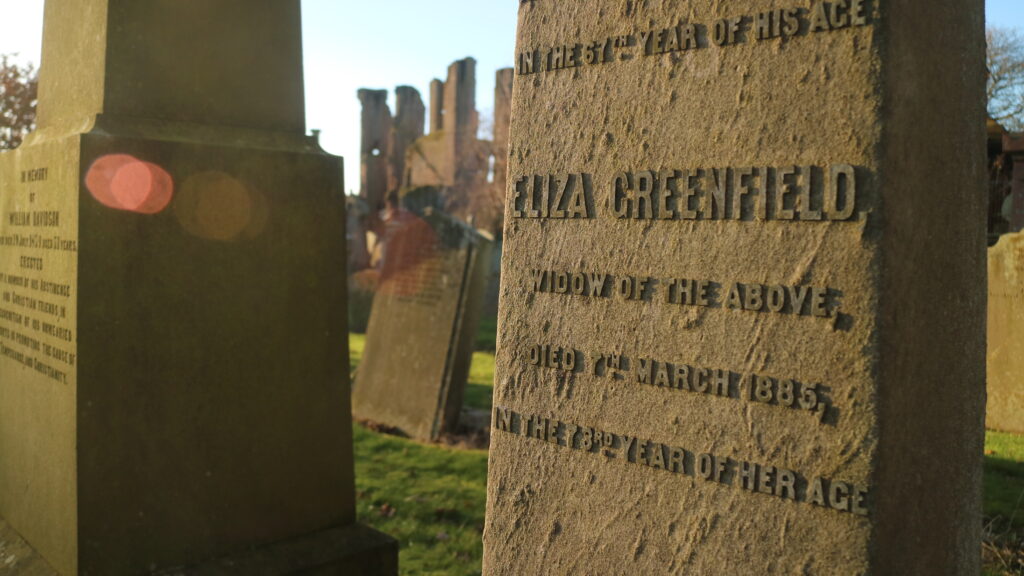
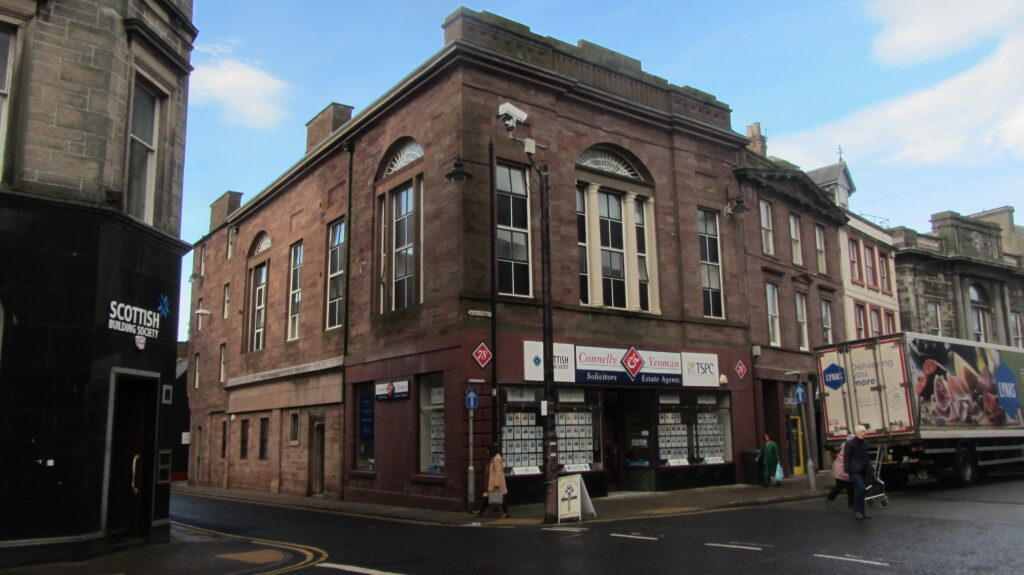
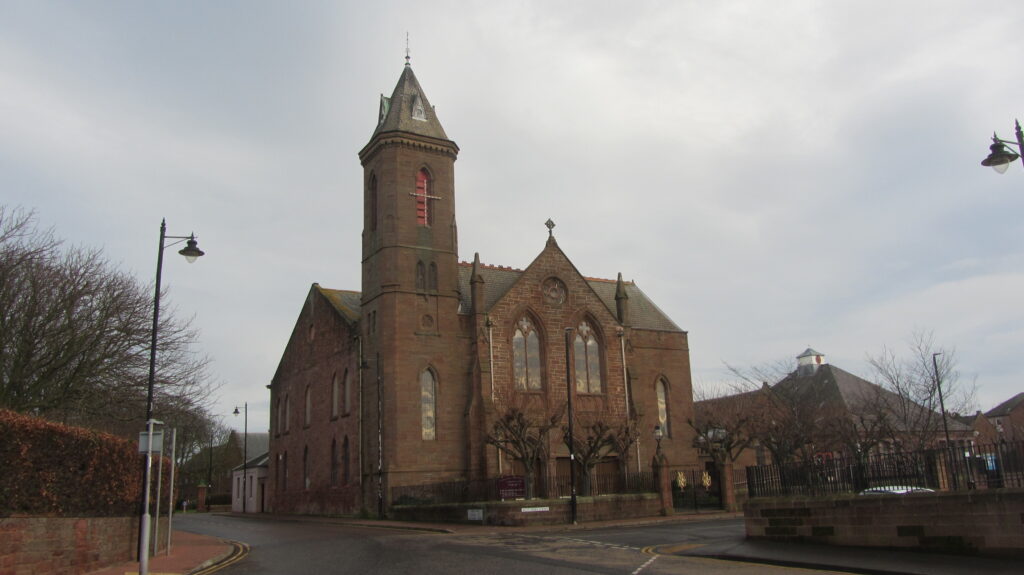
One comment on “Eliza Greenfield: From Jamaica to Arbroath”